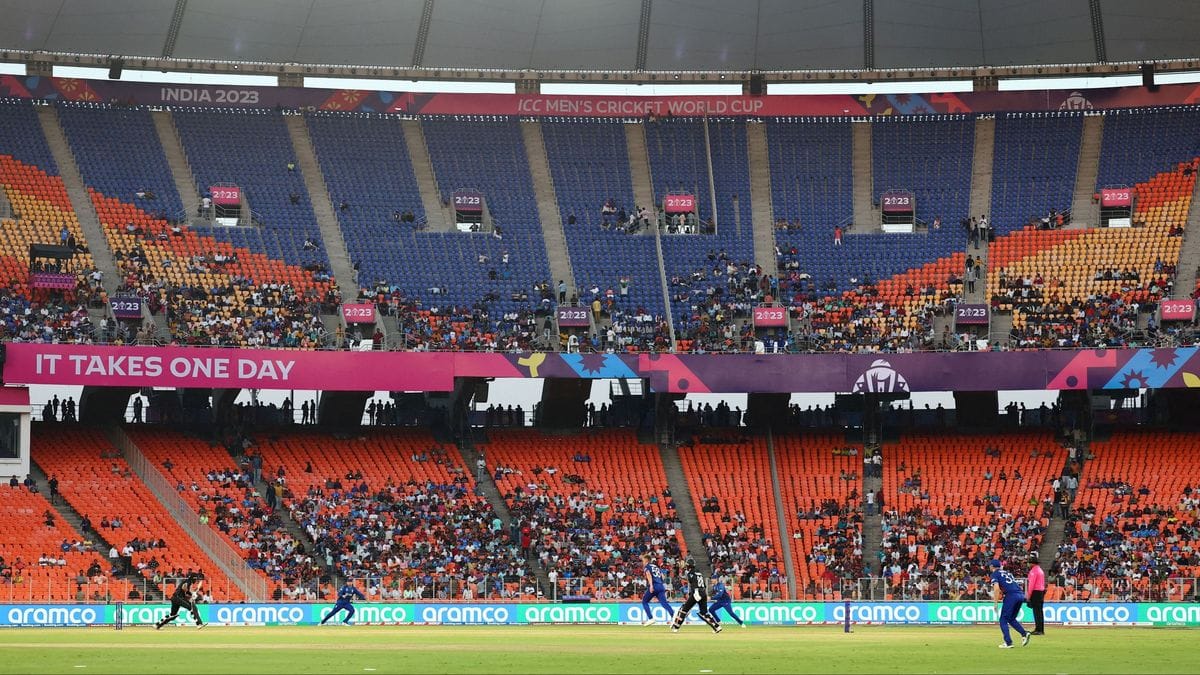Fans recall Virat Kohli’s “five Test centres” call as Ahmedabad crowd stays thin for India vs West Indies

Fans recall Virat Kohli’s “five Test centres” call as Ahmedabad opener struggles for crowd
The first two days of the India–West Indies Test in Ahmedabad saw swathes of empty seats, reigniting a long-running debate about how and where India should host red-ball cricket. Even with a national holiday on Day 1 and a Friday on Day 2, attendance remained sparse, prompting many to revisit Virat Kohli’s 2019 pitch for specialised Test venues that reliably attract weekday crowds.
What happened in Ahmedabad
The Narendra Modi Stadium is a magnificent, 1,32,000-seat arena built for blockbuster spectacles. But against a lower-ranked West Indies, the vast stands looked bare for large stretches of the first two days. India’s bowlers created a compelling Day 1—Mohammed Siraj and Jasprit Bumrah bundled West Indies for 162—yet the atmosphere remained flat. Day 2 brought quality batting through KL Rahul’s century and Shubman Gill’s fifty, but still failed to pull fans in large numbers.
Why Kohli’s idea is trending again
After the Ranchi Test in 2019, Kohli argued that India should designate a handful of “fixed” Test centres to build tradition, predictability, and habit among fans.
“We should have five Test centres, period… For T20 and one-day cricket, rotation is fine, but Test cricket should be at venues teams know they’ll play at—pitches they can expect, crowds they can expect. You want to keep Test cricket alive and exciting; five strong Test centres at the max.”
Supporters believe that classic red-ball hubs—Chennai, Mumbai, Kolkata, Bengaluru, Delhi, and a couple of high-interest alternates like Pune or Vizag—are better equipped to nurse weekday attendance with engaged local bases and established viewing habits.
Why mega-stadia aren’t always the answer
Scale vs opponent: A 1,32,000-seat venue can look empty unless the occasion is marquee—Pakistan, Australia, England, or a title event. Against a rebuilding West Indies, the optics of emptiness are harsh, even if absolute footfall is respectable.
City rhythms: Weekday Test crowds depend on urban commuting, school/office timings, and public transport convenience. Traditional venues have baked-in fan cultures and easier access for habitual Test-goers.
Narrative hooks: A long home season without recently retired icons can lower casual walk-ins. Passing the baton to a new leadership core means rediscovering how to market the red-ball story.
What would a five-centre plan look like?
Predictable calendars: Fans know months in advance where Tests land; local associations can plan school tie-ups, club blocks, and corporate bookings early.
Venue specialisation: Pitches tailored to India’s red-ball identity, spectator amenities tuned for long-day stays (shade, water, food courts, kids’ zones).
Traditions and rituals: Bell ringers, morning clubs, local music, grassroots clinics—habits that turn a Test into a city’s five-day festival.
The counterpoint: widen the map, don’t shrink it
There’s merit in taking Tests to emerging cities to broaden the sport’s base. A balanced model might fix four to five anchors each season and rotate one “growth” city when the opponent profile and dates fit. That protects tradition without closing doors on new audiences.
Marketing and scheduling fixes that help everywhere
Smarter timings: Late starts on weekdays (e.g., 11 am) and twilight-friendly facilities to catch post-lunch and after-work crowds.
Ticketing nudges: Early-bird bundles, multi-day passes, student pricing, and family stands.
Storytelling: Player meet-and-greets on rest evenings, museum zones, and heritage exhibits honouring past India–WI classics to connect eras.
Transport partnerships: Seamless metro/bus tie-ins, parking pre-booking, and shade-and-hydration plans for afternoon sessions.
The cricket didn’t disappoint
Even if the stands looked sparse, the cricket was gripping. India’s quicks gave the match a jolt on Day 1, KL Rahul closed a nine-year home-century wait on Day 2, and Ravindra Jadeja’s all-round imprint guided a ruthless, short Test. The product is strong; the packaging—venue, schedule, and local engagement—needs a sharper Test-specific plan.
Kohli’s old plea strikes a nerve today not because India lack fans, but because red-ball crowds thrive on habit, heritage, and homes they can return to every season. Fix the homes, and the house fills up.